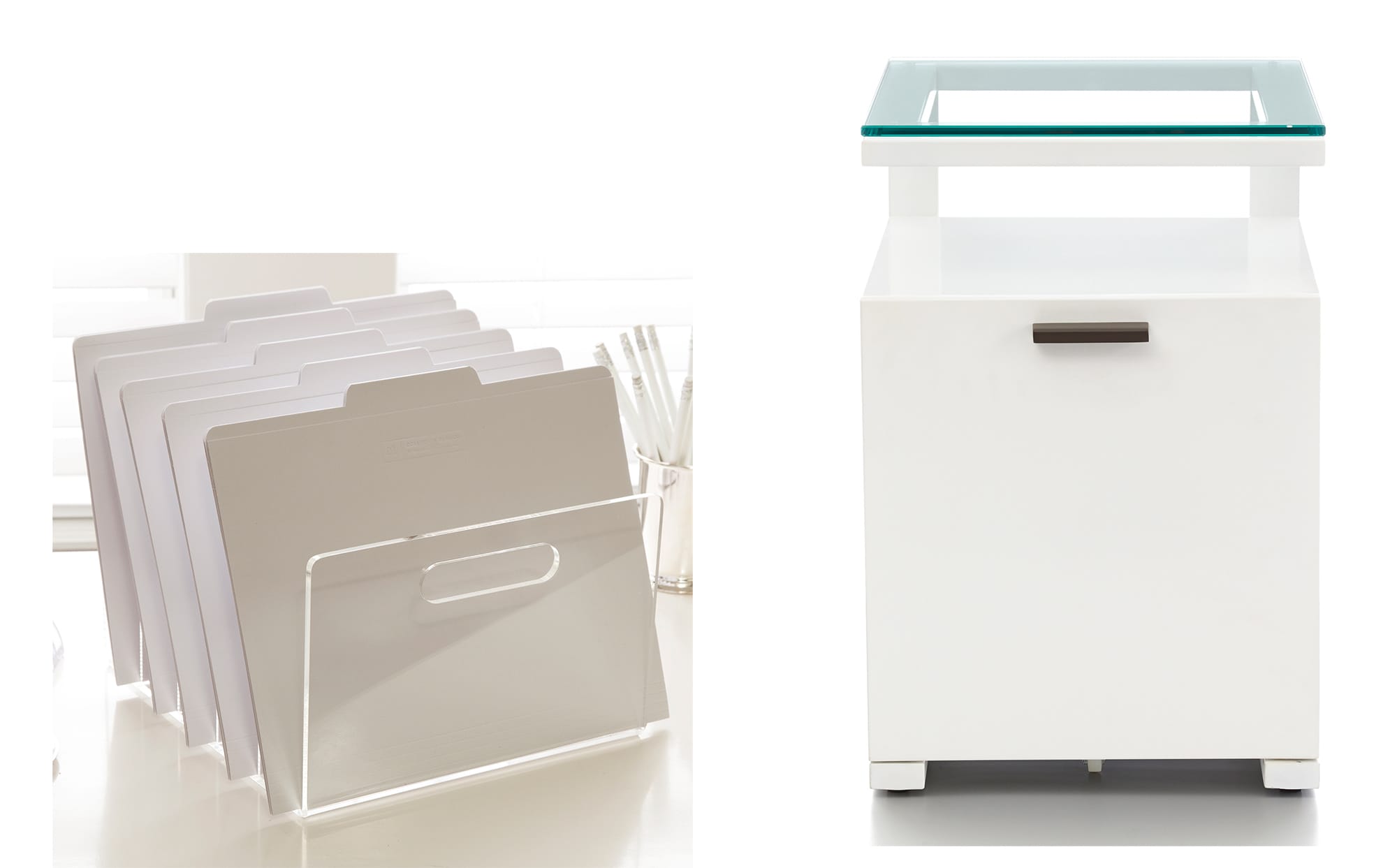As technology has evolved so rapidly in the past 10 years, so has the notion of a home office. We increasingly carry around work and personal files on a handheld device or laptop. But despite this convenience, it still helps to feel grounded with a designated spot in your home to work, keep your important personal papers and store office supplies.
Your base of operation doesn’t have to be an entire office. In fact, a big space doesn’t always result in better organization; if you end up keeping too much, it can make finding what you need more difficult. Your work space could be a desk in the corner, or even a designated counter. No matter the size, what’s most important is to make the best use of your space by assigning a place for everything. Here are some tips:
• Files and paper: At the beginning of the year (now!), go through and purge last year’s utility bills, bank statements and school papers so that you have room for this year’s records. Put papers that you need to keep from the previous year, but don’t need to access, in a labeled filing box and store them. Use desktop file boxes or wall-mounted file pockets for bills. Magnetic strips and bulletin boards are great for pending papers or items that need action.
Each family member should have his or her own letter-size box for this year’s keepsakes. At the end of the year, go through the box to decide what to keep and what to toss. Older keepsakes, such as the birthday cards you received two years ago or the artwork your 10-year-old created when he was in kindergarten are OK to keep, just not in your everyday work space. Box them up neatly, label them and put them in the attic or basement.



